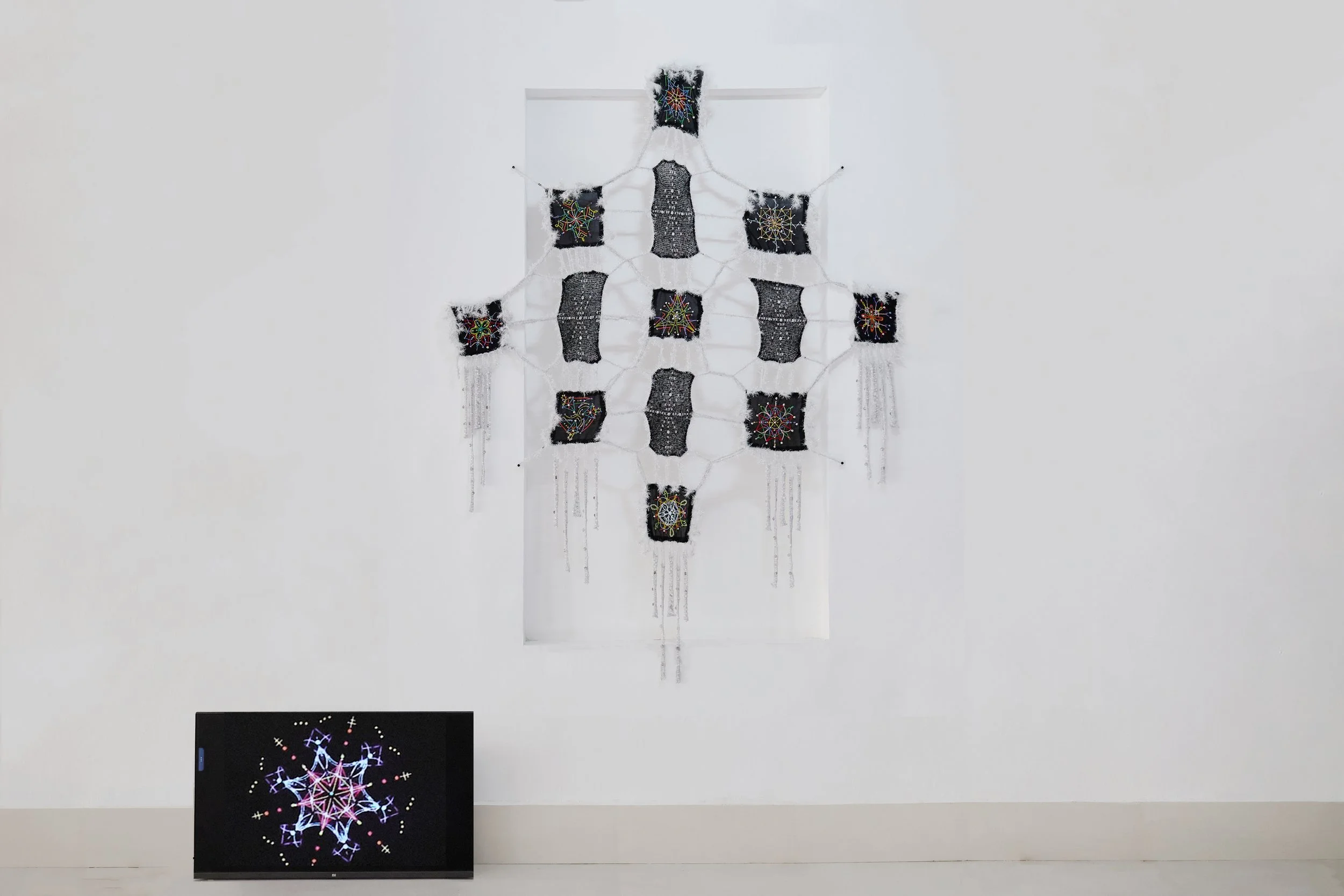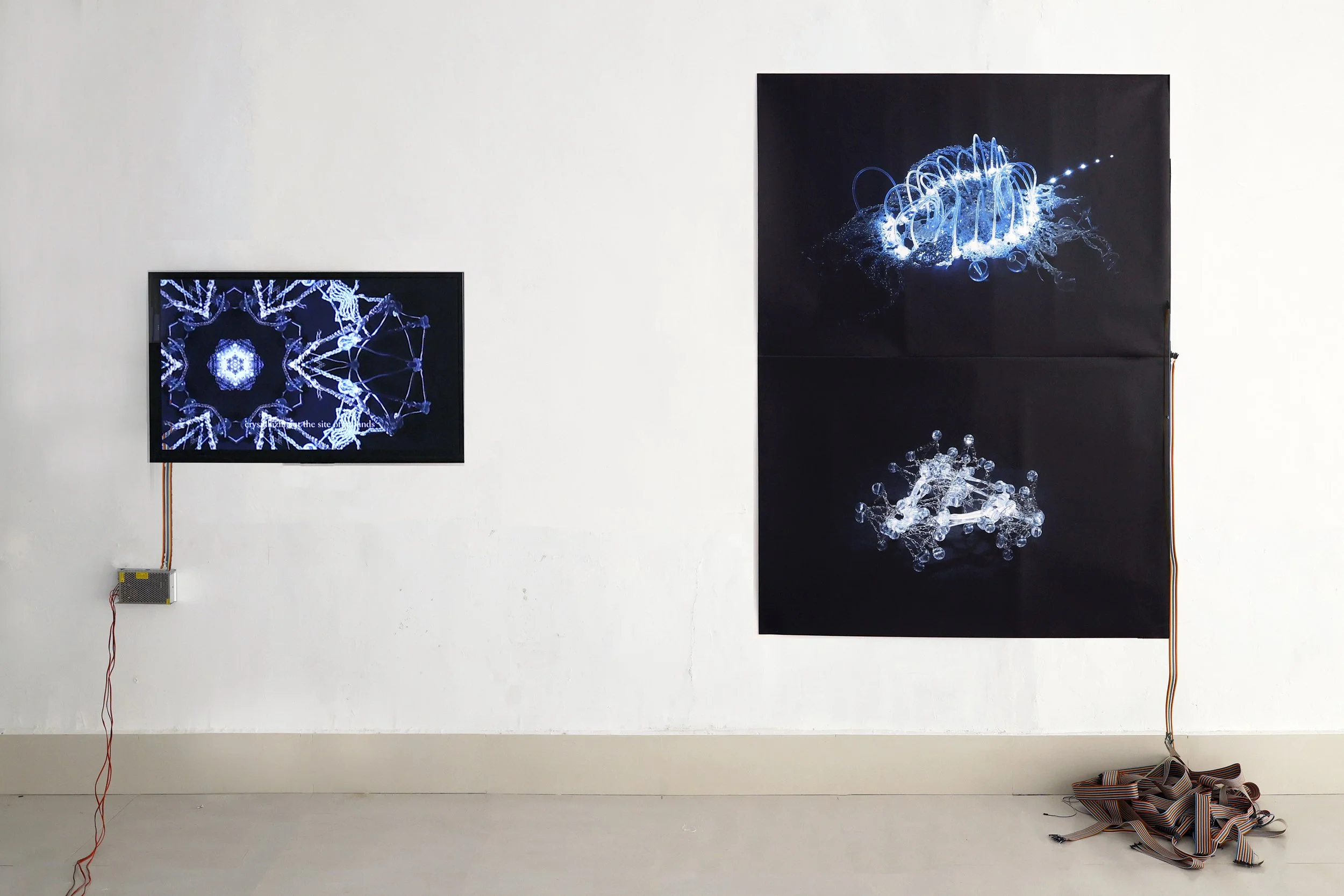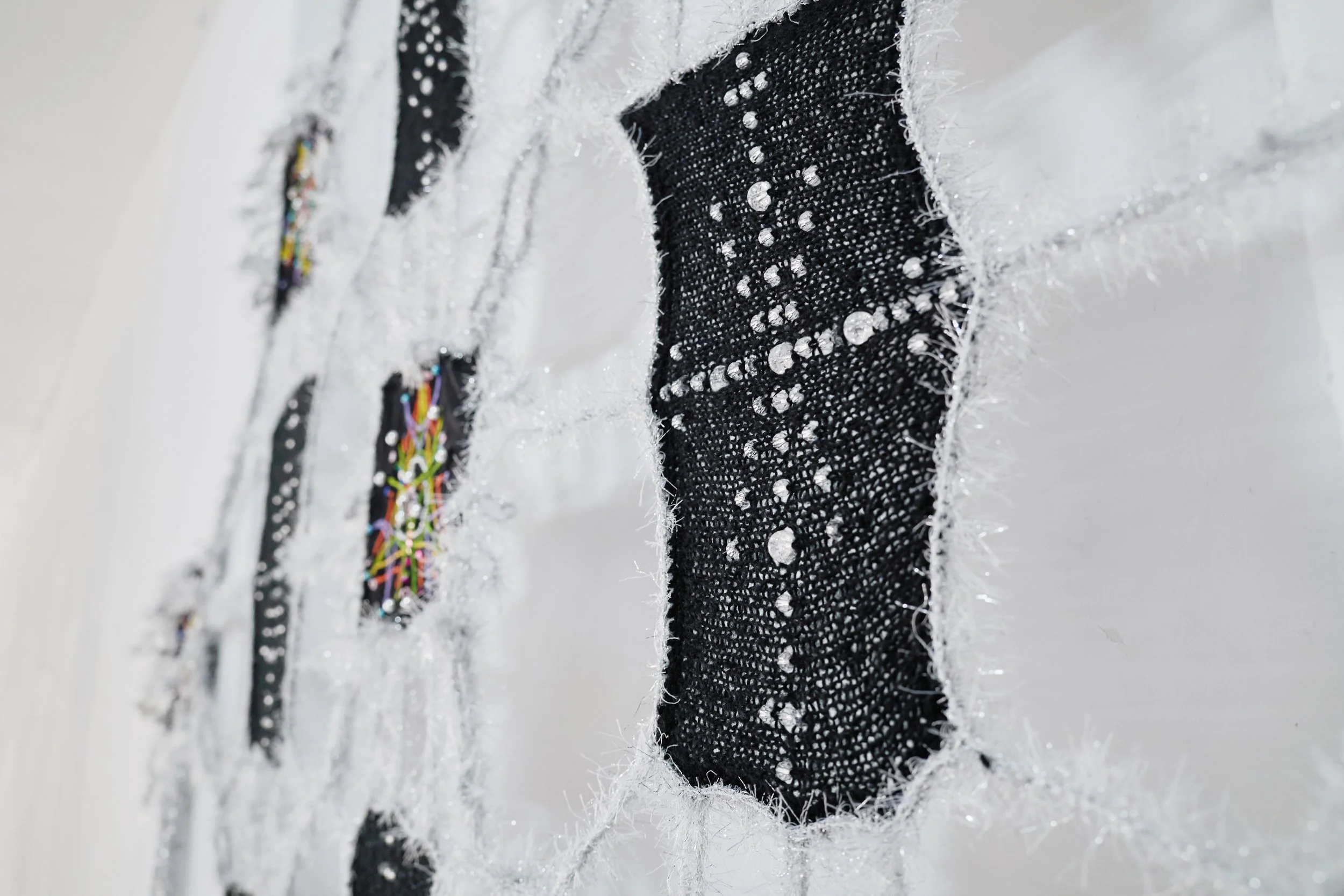
Spirit-Infusing
ARTIST: Shen Lu
SOLO EXHIBITION 16/06/2024-20/06/2024
Spirit-Infusing : Textiles, Algorithms, and Life
Spirit-Infusing
16/06/2024-20/06/2024
Spirit-Infusing 2024
Photo by Luan gallery
Spirit-Infusing
Shenlu’s project in Shan State, Myanmar, engages with local weaving traditions, yet it is not simply a continuation of cultural practice. It is a pointed critique of industrial heritage, the intrusion of modern technologies, and the asymmetries embedded in globalization. The weaving workshops in Shan State have long existed at the margins, and traditional techniques have been pushed into rural areas under economic and social pressures. By introducing algorithmic systems into these spaces, Shenlu reactivates interactions among fibers, optical threads, and material structures—ostensibly “breathing life” into them. Yet this process also exposes the power dynamics implicit in technological intervention: algorithms and digital systems do not merely enliven material; they redefine what counts as life, creativity, and cultural value.
The Pa’O people, a minority group residing in the highlands of Shan State, see weaving as a form of “life creation.” Women are the primary weavers, and during the process they embed herbs, petals, or symbols, believing that each thread carries vitality and protection. Completed textiles are hung before altars in rituals that “activate” them, granting spiritual and social agency to the woven threads.
Shenlu’s project resonates culturally with the Pa’O practice of “infusing life” into cloth, but it also raises political and ethical questions: when algorithmic systems intervene in marginalized artisanal labor, who controls the definition of life? Are these systems truly animating the material, or are they recasting traditional culture within a digital, externally defined logic? In this way, the project both honors handcraft knowledge and stages a critique of globalization, technological intervention, and the hierarchies these processes reproduce.
This awareness of “animating threads and patterns” invites reflection on how structured systems generate complexity: whether in the intricate patterns of handwoven textiles or the sequences of mechanical processes, structure emerges from rules. The Jacquard loom of the 18th century, with its punched cards for repeating patterns, illustrates this: threads and holes corresponded to instructions, giving the textile a sense of programmed life—an early intersection of structure, labor, and control.
During World War II, the programmers of ENIAC were almost entirely women. Known as “computers,” they performed calculations and programmed the machines. Like women mastering complex weaving patterns, these early programmers carried the core technical and structural work. Grace Hopper played a pivotal role in developing compilers and defining the concept of the “bug,” yet her contributions were largely unrecognized. Across both handcraft and technology, women have often been central to giving form and vitality, yet their labor remains underacknowledged.
In contemporary contexts, weaving intersects with computation in ways that continue to provoke critical reflection. Digital life experiments, such as Thomas Ray’s virtual ecosystem (1991), demonstrate self-organizing potential, yet also raise questions about the limits of simulation and the imposition of control. Similarly, neuroscience simulations like the Blue Brain Project attempt to reproduce biological processes in silico, offering insights into structure and emergence, but also embodying a modern impulse to manage and replicate life. These examples remind us that technological “animation” of matter is inseparable from social, ethical, and political concerns.
In contemporary art, weaving is no longer only a physical craft; it has become a site where materiality, life, and human intention intersect and collide. Projects like MIT Media Lab’s Weaving Memory explore the storage and display of information in textiles. Artists such as Anicka Yi and Heather Dewey-Hagborg combine biological materials with textile, programming, and AI to produce dynamic, mutable works. The Cloud Weaving Model blends AI with indigenous weaving knowledge, emphasizing relational and ritualized practices. Yet such experiments also prompt reflection: when technology intervenes in traditional craft, who defines meaning, and what forms of authority are asserted over material life?
Shenlu’s work in Shan State exemplifies this tension. She applies weaving techniques to optical fibers and other non-biological materials, blending algorithmic patterns with human intervention, allowing inert materials to “come alive.” Through the interweaving of threads, silk, metal wires, and glass beads, she explores a form of “energy language”: the structures she generates are not merely geometric patterns, but responses to the material itself. At the same time, this work raises questions about authorship, control, and the limits of technological intervention: is the life witnessed in these textiles emergent, or is it defined and constrained by human and algorithmic design?
By situating weaving at the intersection of human, material, and technological processes, Shenlu transforms a traditionally productive activity into a synthesis of spirit and craft. She frames weaving as a bridge connecting humans with nature and the cosmos: patterns arising from the interplay of materials and algorithms express relational dynamics as much as they present visual form. Her practice continues and expands a trajectory from traditional textiles to digital life, cultivating new forms of vitality while critically reflecting on the power relations embedded in technological and cultural intervention.





